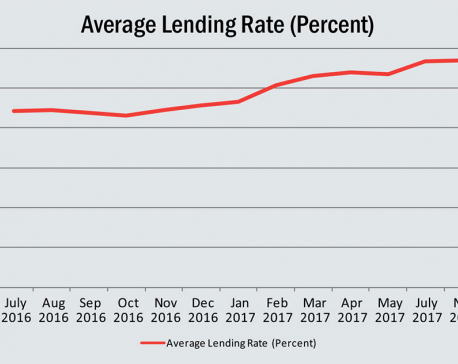
OR
Central bank asks banks to to identify two more risks
Published On: December 3, 2017 09:27 AM NPT By: Republica | @RepublicaNepal

KATHMANDU, Dec 3: Nepal Rastra Bank (NRB) has instructed bank and financial institutions (BFIs) to classify their risks into seven categories as part of their risk management efforts, and has laid down provisions that they should follow to prevent the risks that are taking toll on the institutions.
While the unified directives of the NRB issued in mid-July had directed BFIs to classify banking risks into five categories, the new circular of the central bank, which replaces the risk management rule included in the unified directives, added ‘market risk’ and ‘other risks’ as two categories that BFIs must have in their risk management strategy and function.
The previous risk management directives included credit risk, operational risk, liquidity risk, interest rate risk, and foreign exchange risk.
To address the market risk, the central bank said that an institution should have necessary policy and procedure for the management of market risks resulting from the volatility in the indicators like price and interest rates. Commercial banks should set up a middle office for the monitoring, measurement and analysis of risks in the treasury management.
The ‘other risk’ is related to other risks like reputation risk, strategic risk, and anti-money laundering/combating the financing of terrorism (AML/CFT). BFIs should identify all these types of risks and devise adequate policy and procedures for the management of such risks, according to the directives.
The new circular of the NRB issued on Wednesday directed ‘A’, ‘B’ and ‘C’ class BFIs to develop and enforce a risk management program to identify, measure, monitor, manage, control and report risks of the institution.
This program, according to the new directive, should comprise of active oversight from the board and top management, effective risk management function, appropriate management information system, and effective internal control system.
The NRB has said that the board of directors of the respective institution should be responsible for overall risk management. The board should prepare a risk management strategy by identifying the institution’s risk appetite and tolerance limit, according to the new risk management directives.
The central bank has also told BFIs to separate main business function with risk management function so that there is no conflict of interest between the two functions. The directive has also urged the BFIs to develop a risk culture in the institution that make each employee cautious for the risk management.
“A strong control system should be maintained in the institution by limiting the risk appetite to the tolerance limit,” read the new directive. The BFIs will now also have to prepare the annual report every year comprising policies, processes, and functions that are in implementation for the management of all material risks and the report should be submitted to the NRB’s Supervision Department within a month of the fiscal year end.
BFIS TO HAVE RISK MANAGEMENT OFFICER
BFIs will now have a chief risk officer (CRI) or an equivalent post that will be independently working for the risk management. The CRI will be directly reporting to the board of directors or the risk management committee.
Though some BFIs used to have a separate CRI to oversee risk management plan, the new directive will make it mandatory to create the post and make appointment to deal with the risks issues in the institution. “We have got the CRI to look after risks of the bank for the last three years,” said Bhuvan Dahal, the CEO of Sanima Bank Ltd.
The CRI will, among others, monitor possible risks in all units of the institutions and caution decision makers about the unexpected risks observed during the monitoring, prepare reports on risk and present it to the risk management committee or the board of directors and help in effective risk management.
You May Like This

Credit crunch bedevils banks: Bank deposit rate at 13%, lending rate spikes to 16%
KATHMANDU, Dec 29: Due to lack of farsightedness and aggressive lending practices among banks and financial institutions (BFIs), credit is... Read More...

Citizens Bank named ‘Best Bank in Public Sector’
KATHMANDU, Sept 14: The World HRD Congress has named Citizens Bank International Ltd (CBIL) has named the ‘Best Bank in... Read More...

BAFIA amendment to allow foreign promoters of Nabil Bank, NMB Bank to retain stakes
KATHMANDU, June 13: A bill at the parliament to amend the Banks and Financial Institutions Act (BAFIA) could pave the way... Read More...




Just In
- Nepalgunj ICP handed over to Nepal, to come into operation from May 8
- Nepal to gift two elephants to Qatar during Emir's state visit
- NUP Chair Shrestha: Resham Chaudhary, convicted in Tikapur murder case, ineligible for party membership
- Dr Ram Kantha Makaju Shrestha: A visionary leader transforming healthcare in Nepal
- Let us present practical projects, not 'wish list': PM Dahal
- President Paudel requests Emir of Qatar to initiate release of Bipin Joshi
- Emir of Qatar and President Paudel hold discussions at Sheetal Niwas
- Devi Khadka: The champion of sexual violence victims



_20240423174443.jpg)











Leave A Comment